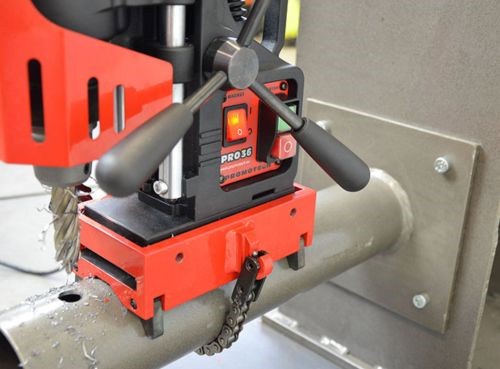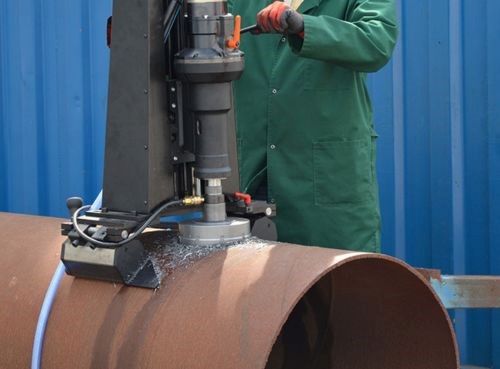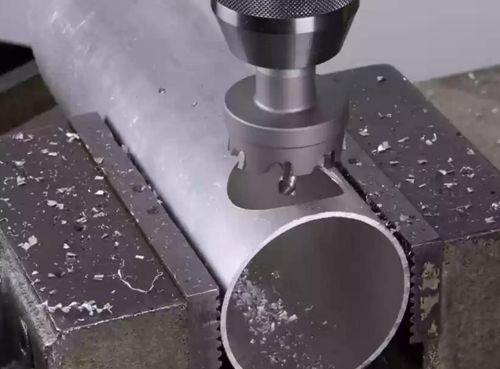As you look to stay ahead of the curve, particularly in the engineering world, tube drilling is a technology you need to seriously consider. This technology allows you to pierce or puncture through the hardest of materials with tube drilling.
What is Tube Drilling?
Drilling tube is a conventional excavation technique that exploits a hollow cutting device to puncture holes into your solid materials, particularly metals.
Its utilization transcends varying industries including the mining and automotive industries. Drilling tube also promises you comparatively lower energy consumption and less heat generation.

Tube Drilling Techniques
One of the primary reasons that have driven the prominence of how to drill tubes upwards is its diversity. Depending on the specifics of your application, you can opt for either of the underlying tube drilling methods.
· Rotary Drilling
This tube drilling technique relies on a revolving top drive, which rotates your hollow cutting material downwards under pressure. This creates a cylindrical puncture in your workpiece. Rotary drilling can achieve numerous geological formations and this has seen it widely utilized in water well drilling and oil and gas extraction.
How It Works
- First, your hollow cutting tool is hooked onto your drill string.
- Consequently, your drill string is lowered towards your workpiece, ground, or even rock.
- Once in contact, the rotating drill bit punctures the surface to a depth similar to the drill bit’s length.
- As the drill bit sinks into the surface, it generates cuttings, which must be extracted. This is typically achieved by injecting a drilling fluid into the hole.
Advantages
- When drilling soft surfaces or formations, it achieves relatively faster drilling speeds.
- It extracts the cuttings simultaneously and this makes the process faster.
- By facilitating non-stop drilling, rotary tube drilling helps you minimize downtime.
- The drilling bit utilized in this method is lighter in weight and can be used on distinct job sites.
- This method allows us to achieve comparatively deeper drilling depths.

· Percussion Drilling
This tube drilling technology has been exploited for years thanks to its simplicity and no need for circulating fluid. Percussion drilling relies on a characteristically weighty drill bit, which is raised and dropped continuously to extract unwanted materials from your surface.
How it Works
- First, your weighty drill bit is hooked onto a cable. This special cable or string carries out the lifting and dropping.
- Subsequently, the bit is lowered in quick succession on your formation. This results in the removal of unwanted components such as rocks when drilling boreholes.
- As the drilling carries on, a bailer extracts the generated cuttings. This is undertaken simultaneously thus preventing the excess accumulation of cuttings.
- In certain applications, the drilling process is concluded with the installation of an impermanent casing. This averts the collapse of the drilled hole.
Advantages
- It extracts relatively low-tech machinery, making it cheaper than most of the other tube drilling techniques.
- Percussion drilling employs hammering action and this allows it to extract unwanted materials from the hardest of surfaces.
- You can easily ferry the machinery needed to undertake percussion drilling making it suitable for remote locations.
- Thanks to its reliance on a weighty drill bit and a bailer, you can pry loose large amounts of cuttings.
· Directional Drilling
This tube drilling technique helps engineers and mining experts overcome obstacles such as rock formations obstructing access to valuable minerals or gas and oil. Directional drilling utilizes downhole motors or steerable heads to drill non-vertical holes. It, however, necessitates technical expertise.
How it Works
- First, you draw up your desired drilling path then proceed to puncture a diameter hole with the help of a standard drill bit.
- Using a tracking device, monitor and readjust your drill bit to ensure it does not steer away from your planned path.
- Subsequently, deploy a bigger drilling bit to ensure you achieve your desired hole diameter. Here you will need a reaming tool.
Advantages
- It reduces environmental disruption by minimizing the load of material removed.
- It relies on advanced machinery and this helps you achieve precise hole paths.
- It can drill holes in places that are relatively hard to reach such as underneath buildings and rocks.
- It is price-effective since it minimizes expenses related to environmental impact mitigation.
· Auger Drilling
This unique technique is revered for utilizing specialized helical screws to pierce through varying materials or formations. Auger tube drilling is often exploited when drilling moderately soft surfaces such as boreholes in soft grounds.
How it Works
- First, you drive a cylindrical auger with cutting edges through your workpiece, surface, or formation.
- As the auger drills the hole, the cuttings generated are captured by the auger’s hollow center. This saves you the hustle of using a different cuttings removal mechanism or equipment.
- To achieve a deeper hole depth, the drill bit elongates thanks to the addition of sections of your auger flight. These added sections help extend the depth of your drilled hole.
Advantages
- It guarantees relatively faster drilling especially when dealing with soft surfaces.
- By incessantly extracting your cuttings, auger tube drilling keeps your drilling operation free from contamination.
- You can reuse the auger flights and this makes this technique comparatively cheaper.
- It minimizes environmental contamination by hardly utilizing drilling fluid.
· Core Drilling
This tube drilling technique is specialized to pry out cylindrical rock samples and it typically relies on diamond drilling tools. It helps with geological analysis that necessitates intact rock samples. Core drilling thrives in geotechnical engineering as well as mineral exploration thanks to its ability to deliver high-quality samples.
How it Works
- First, the core drilling bit, sprinkled with diamonds on the tip is driven through your rock formation.
- As the drilling bit pierces through the rock formation, it drills out a rock sample that is tube-shaped.
- As the cutting carries on, water is passed through the drill string and this helps cool the drilling bit. It also helps with the successful extraction of the rock samples.
Advantages
- It provides you with high-quality rock samples that are intact and tubular.
- It works on varying types of surfaces including hard metamorphic rocks.
- It relies on modern diamond-tipped drill bits, which guarantee accurate depth control.
Tube Drilling Tools

The need for precise drilling has prompted the introduction of varying tube drilling technologies and tools. Some of these advanced and precise tube drilling components include:
- Drill Pipes: These are high-strength conduits tasked with injecting drilling fluid thus facilitating an efficient drilling operation. They are often used in rotary tube drilling and they are tailor-made to withstand the rigors of drilling.
- Drill Collars: These are thick-walled drilling tubes designed to withstand the vibrations of drilling while delivering precise tubular holes. You will typically find your drill collar above the drill bit.
- Top Drive: This is essentially a rotary motor tasked with revolving the string of your tube drilling machine. It is this rotary motion that powers your drilling operation.
- Rotary Table: Although the majority of contemporary tube drilling machines come with top drives, some come with a specialized table. This table is linked to the drill pipe table which enables its rotation hence the commencement of the drilling process.
- Mud Motors: These powerful pumps disseminate your drilling fluid thus cooling your drill bit while also extracting the generated cuttings. They pass the drilling mud through the annulus as well as through the pipe string.
- Steerable Motors: These motors are synonymous with directional tube drilling and they are responsible for responsible for regulating your drill bit’s direction. They, however, do not adjust the rotation of the drill string.
- Continuous Flight Augers: Comprised of spiral flights capable of adding extra sections onto your drilling bit, these tools determine the depth of your drilled tubular holes.
- Cable Tool Drilling Rigs: This tube drilling tool consists of a specialized cable cramping a weight drilling rig, which crashes surfaces to extract cuttings. This cable simply facilitates the up-and-down movement of your drilling rig.
Applications of Tube Drilling

Tube drilling CNC, which is greatly revered for delivering tubular drillings on varying materials and surfaces finds great usage in multiple industries. It primarily thrives in:
- Automotive Industry: Drilling engine blocks, wheels, chassis, and cylinder heads among others.
- Oil and Gas Industry: Drilling oil and gas pipes, as well as wellbores.
- Construction Industry: Drilling foundation piles, concrete, anchoring holes plumbing lines, etc.
- Medical Devices: Drilling surgical instruments, dental implants, and screw holes on medical equipment.
- Electronics Industry: Drilling PCBs, mounting holes, and numerous electronic components.
- Mining Industry: Drilling rocks, blast holes, and core samples.
- Marine Industry: Drilling ship hulls, bolt holes, and other attachment points.
Additional Types Of Tube Drilling
- Coil tube drilling
- Push tube drilling
- Triple tube drilling
- Dual tube drilling
- Round tube drilling
- Triple tube drilling
- Double tube drilling
Conclusion
Tube drilling has become a mainstay in applications spanning from drilling bolt anchoring holes to surgical instrument drilling. This explains the increased demand for tube drilling services as well as tube drilling equipment.
More resources:
Aluminum Drilling Process – Source: KDM
Drilling Brass – Source: KDM




